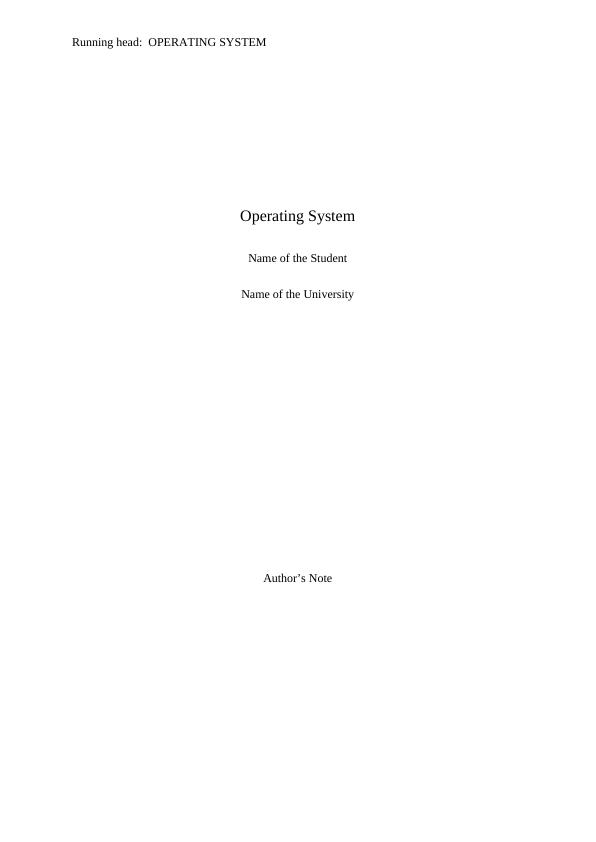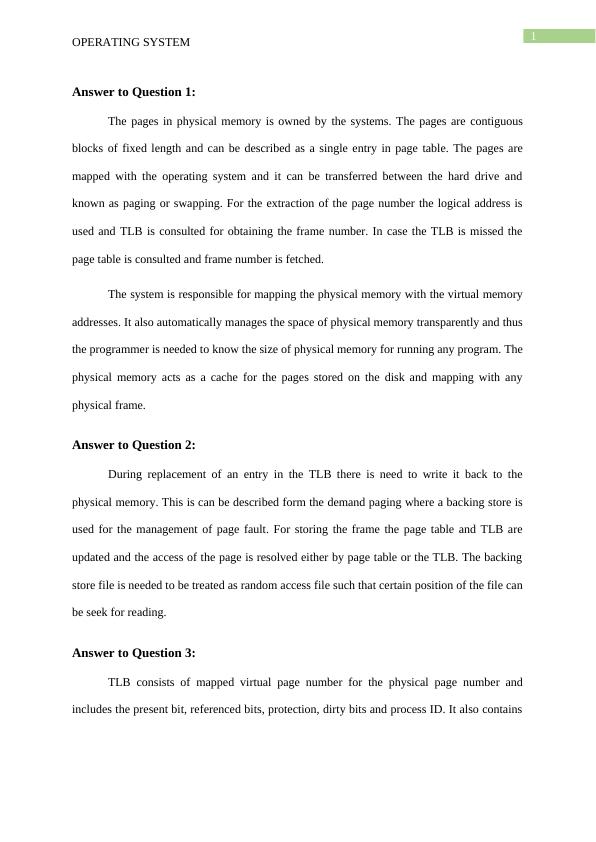Understanding Operating Systems: Memory Management and TLB in a Nutshell
Added on 2023-04-24
7 Pages870 Words248 Views
End of preview
Want to access all the pages? Upload your documents or become a member.
Designing a Virtual Memory Manager
|4
|553
|446
Address Calculation in Memory
|3
|962
|107
Introduction to Cloud Computing (Storage)
|11
|2155
|349
Operating System
|14
|1916
|122
Operating System Assignment: Memory Management
|7
|1491
|433
Operating System - Desklib
|7
|544
|268



